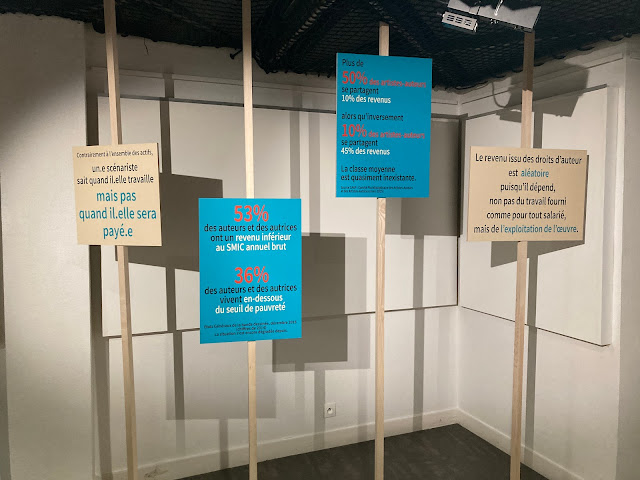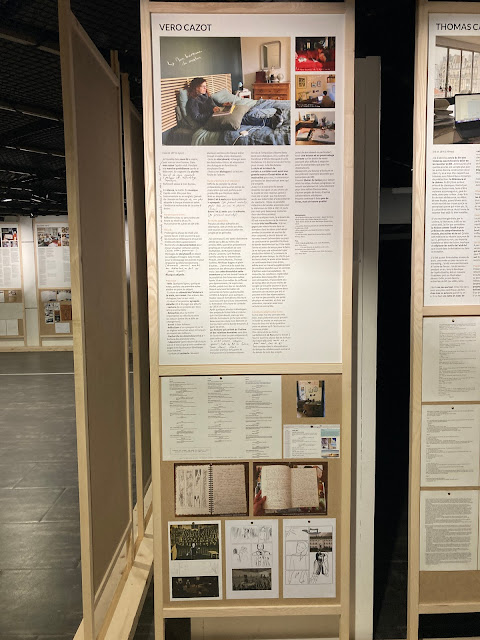reviewed by María Márquez López, Universidad Rey Juan Carlos, Madrid
Catriona MacLeod. Invisible Presence. The Representation of Women in French-Language Comics. Bristol, UK/Chicago, USA: Intellect, 2021. 260 pp. $39.95 paper, $113.50 hardbound. https://press.uchicago.edu/ucp/books/book/distributed/I/bo94635111.html
The publication of a new historiographical volume that delves into female characters and comic female authors is great news, as so far those two areas have not had the academic and editorial interest they deserve. A great deal of genealogy work remains to be done but fortunately, some researchers such as Trina Robbins (author of Pretty in Ink. North American Women Cartoonists 1896-2013, Fantagraphics, 2013), or Nicola Streeten & Cath Tate (The Inking Woman. 250 years of Women Cartoon and Comic Artists in Britain, Myriad Editions, 2018) have done so. It was striking though that Franco-Belgian bande dessinée (BD), a major source of great world comic classics, had not attracted the same attention from scholars. Finally Catriona McLeod has produced a vast work on this subject. All in all, this book is a great enjoyment for comics scholars.
The oxymoron MacLeod chooses as a title, Invisible Presence, situates the reader with respect to the analytical guidelines which confront an enormous corpus that spans over the entire 20th century and ends in the early years of the 21st century. The author, a lecturer in French studies and politics at the University of London Institute in Paris (ULIP), analyzes in depth the best-known female characters of some bande dessinées (BD) such as Bécassine (1905), Barbarella (1962) or Adèle Blanc Sec (1976). She also highlights possibly less famous works with female protagonists such as Yoko Tsuno (Spirou, 1970), Valérian: agent Spatio-Temporel (Pilote, 1967), Aya de Yopougon (Gallimard, 2005) or Lulu femme nue (Futuropolis, 2008).
Before going into detail about her research, the author tells the readers that what they are going to find on the following pages is, broadly speaking, a failed attempt to graphically and narratively represent a “real woman”, at least according to the BD’s authors (who are mostly male). They claim difficulty in some cases (Tronheim, Moebius), or incompatibility with certain genres such as comedy in others (Goscinny, Hergé). As MacLeod shows, sexuality is the indissoluble and key factor in female representation. Although avoided in the first decades of the 20th century, it was eventually overused in an iconographic journey where young, white, and heterosexual women are the main protagonists.
The book is structured in three sections and thirteen chapters. The first section, “Primary Women Characters,” consists of four chapters which provide information on the three female characters that she feels have achieved the greatest impact on publishing industry: Bécassine, Barbarella and Adèle Blanc-Se). The analysis of Bécassine (La Semaine de Suzette, 1905), a character based on the writer’s Breton maid, Jacqueline Rivière, is quite remarkable. The BD ended up becoming a true best seller thanks to the strategy “defeminized, entirely neutralized as a potentially threatening female representation” (MacLeod, 48) although one should note that the magazine was published for a Catholic school audience. The gender perspective with which MacLeod analyzes how Barbarella (V Magazine, 1962) goes from sexual icon to stereotypical wife and mother in four albums is equally appealing. The author also highlights how Jacques Tardi gives Adéle Blanc-Sec (Les Aventures extraordinaires d’Adèle Blanc-Sec, Casterman, 1976) an “anachronistic independence” in the middle of the 19th century penalizing her at the same time for it with severe physical abuse and a much smaller presence in her own albums than the reader could expect at first (MacLeod, 63, 72, 64).
Throughout five chapters, the second section, “Secondary Women Characters,” draws attention to the lack, or at least very limited presence, of this type of character in the most successful BDs of much of the 20th century (Tintin, Les Schtroumpfs, Astérix among others). MacLeod pays special attention to three works -- Astérix, La Vie de ma mère, Le combat ordinaire -- in which the characters oscillate between de-sexualization, victimization and a new narrative strategy introduced in the 21st century by Manu Larcenet, who portrays “the evolution of women in France” in his albums (MacLeod, 137). It is also worthwhile noting in this section the chapter “Black Secondary Women in the Works of Warnauts and Raives: The Eroticization of Difference,” in which the author reflects on the successful literary trope of the interracial couple (heterosexual, white male, black female) popular in the 1990s BD. As MacLeod underlines, here we are dealing with a feminine iconography in which intersectional variables of gender, sex, race and class intersect (Crenshaw, 1989). And that complicates the Otherness (De Beauvoir, 1949) that characterized the Franco-Belgian BD until then with new signifiers from the exploitation of the longstanding stereotype of the “Black Venus” (MacLeod, 122).
The third section, “Women Characters by Women Creators,” is mainly devoted to recalling the pioneering contribution made by the magazine Ah! Nana (Les Humanoïdes Associés, 1976-1978) in renewing the iconography and narrative of female characters of BD. MacLeod deservedly highlights the pioneering works of Nicole Claveloux and Florence Cestac and focuses on analyzing the discourse on Odile et les Crocodiles (Les Humanoïdes Associés, 1984) by Chantal Montellier. I personally do not agree with certain criticisms MacLeod made about the work of Annie Goetzinger, specifically about her Légende et réalité de Casque d’Or (Glénat, 1976). I consider the value of this work is fundamentally narrative since it shows the gender violence suffered by its protagonist without romanticizing the story (as happened in the film directed by Jacques Becker in 1952), and highlighting the strength of the character to get ahead despite a tragic life of sexual abuse at a very early age. I also disagree with the analysis of the female characters in Ah! Nana in chapter 11: “a small minority focused on women as strong and positive figures who challenge the misogynistic bias of society” (MacLeod, 162). In this sense, I consider it appropriate to contextualize the moment of production of the magazine (post-second feminist wave), when perhaps there was more need to expose injustices and reflect the structural nature of gender violence. Perhaps, if the creators of Ah! Nana had outlined very strong and empowered female characters, the French readers of the time would not have identified with them. As for the chapter “Murdering the Male Gaze: Chantal Montellier’s Odile et les crocodiles,” the discourse on the pioneering contributions of this French author is brilliant in various ways: from the recovery of the figure of Artemisia Gentileschi in cultural imaginary (widely vindicated in the feminist sphere later), to the denunciation of sexual violence more than thirty years before the #MeToo movement or the invention of the literary trope “rape-revenge” (MacLeod, 172) now present in contemporary audiovisuals such as Promising Young Woman, or I May Destroy You. This last section ends with the chapter “Everyday Extremes: Aurélia Aurita’s Fraise et chocolat” (Les Impressions Nouvelles, 2014) that MacLeod includes as an example of the “de-eroticization of sex” (MacLeod, 184) and a female body’s representation that escapes the (heterosexual) male gaze.
Invisible Presence. The Representation of Women in French-Language Comics is a fundamental book for comics scholars, whether or not their research is focused on gender studies. Catriona MacLeod’s detailed analysis of BD, and its male and female authors, is a very valuable source of information especially the vast and varied descriptive level of characters, vignettes, plots and actions. So much so that a narrative thread is sometimes difficult to follow without having the image analyzed appear on the same page. Finally, I have to highlight the importance of the vindicating aspect of this volume, namely highlighting the void regarding female characters and female authors that persists in encyclopedic and historiographical volumes on BD; the difficulty of creating genealogy about 20th-century pioneering female authors, and the gaps in the creation of female characters other than by straight white women. It is also important to acknowledge and deplore, as MacLeod does, the invisibility of French female authors, such as Chantal Montellier, who, despite their enormous and interesting production, have barely been translated.

























































